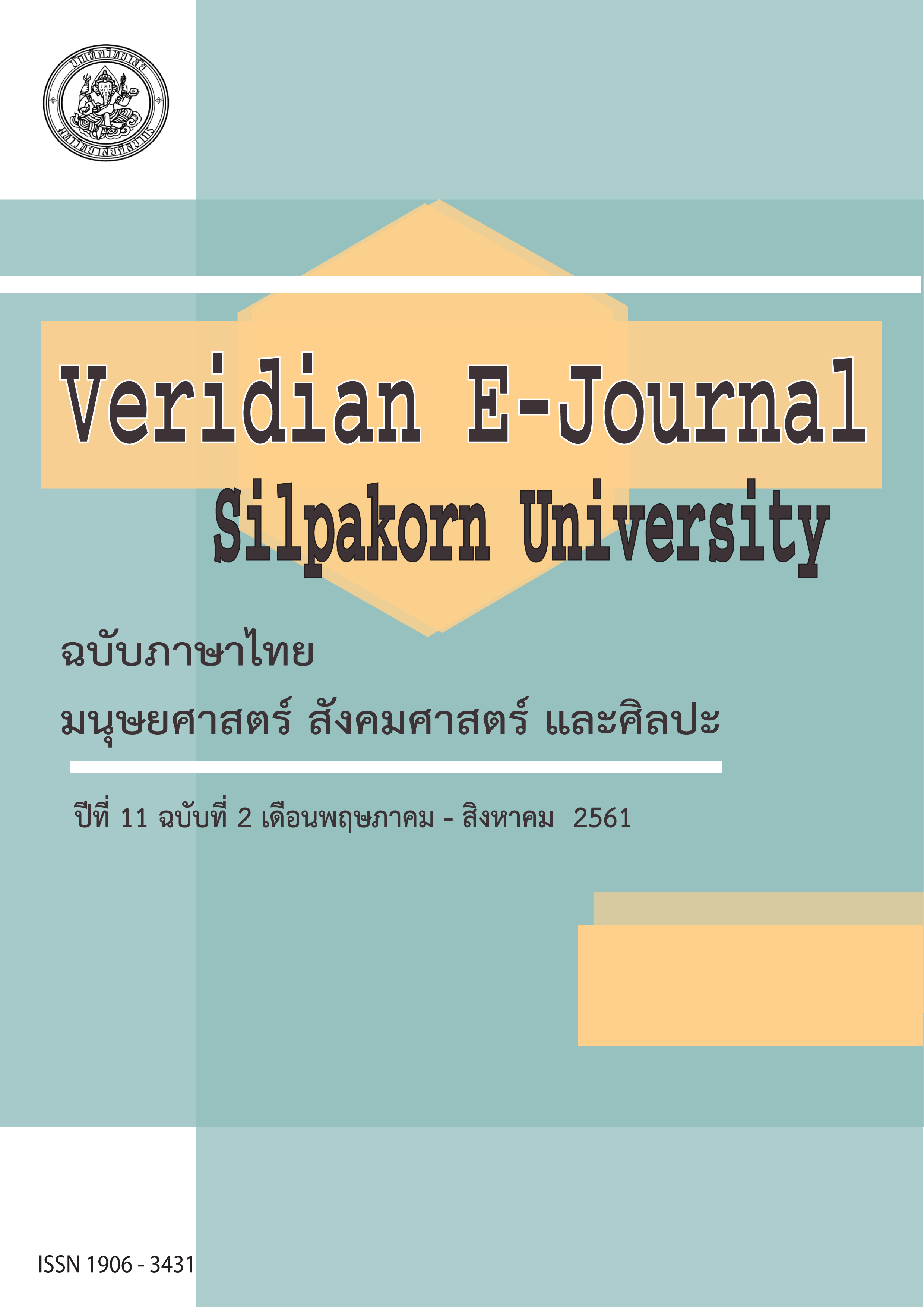การวิเคราะห์แนวทางการพัฒนาพื้นที่บริเวณถนนมอเตอร์เวย์สายตะวันตก ภายใต้โครงการพัฒนาเขตเศรษฐกิจพิเศษทวาย (An Analysis of Regional Development through the West Motorway under Dawei Special Economic Zone Project)
Main Article Content
Abstract
การศึกษานี้ มีวัตถุประสงค์เพื่อศึกษาการเปลี่ยนแปลงและเปรียบเทียบการใช้ประโยชน์ที่ดินบริเวณถนนมอเตอร์เวย์สายตะวันออกและสายตะวันตกโดยอาศัยข้อมูลสารสนเทศภูมิศาสตร์ในปี พ.ศ.2542 2552 และ 2558 และศึกษาผลกระทบด้านเศรษฐกิจ สังคม และอนามัยสิ่งแวดล้อมที่เกิดขึ้นในพื้นที่ชุมชนบริเวณถนนมอเตอร์เวย์สายดังกล่าว ระหว่างปี พ.ศ.2548 ถึง พ.ศ.2558 การศึกษานี้ใช้วิธีวิทยาแบบผสมผสานระหว่างเชิงคุณภาพและเชิงปริมาณ และเก็บข้อมูลระหว่างเดือนเมษายนถึงตุลาคม พ.ศ.2558 จากชุมชนตัวอย่างที่ตั้งอยู่แนวถนนมอเตอร์เวย์สายตะวันออกและสายตะวันตกแห่งละ 3 ชุมชน และเก็บข้อมูลโดยวิธีการสำรวจ การสัมภาษณ์เชิงลึกผู้นำและตัวแทนชุมชน และการใช้แบบสอบถามแบบอุบัติการณ์จากหัวหน้าครัวเรือน จำนวน 95 ครัวเรือนจากฝั่งตะวันออกและจำนวน 94 ครัวเรือนจากฝั่งตะวันตก
ผลการศึกษาชี้ให้เห็นว่า การสร้างถนนมอเตอร์เวย์หมายเลข 7 ทำให้รูปแบบการใช้ประโยชน์ที่ดินของชุมชนเปลี่ยนแปลงอย่างมีนัยสำคัญ โดยพบว่า มีพื้นที่เมืองและพื้นที่อุตสาหกรรมเกิดขึ้นตลอดแนวถนนทั้งสองฝั่ง การเปลี่ยนแปลงดังกล่าวจึงจูงใจให้แรงงานภาคการเกษตรเข้าไปสู่แรงงานภาคอุตสาหกรรม ภาคพาณิช-ยกรรมและภาคบริการมากขึ้นเป็นลำดับ และครัวเรือนมีรายได้สูงขึ้นจากกิจกรรมทางเศรษฐกิจนอกภาคการเกษตร อย่างไรก็ตาม สภาพสังคมในชุมชนและอนามัยสิ่งแวดล้อมกลับเสื่อมโทรมลงอย่างมีนัยสำคัญเช่นเดียวกัน โดยเฉพาะอย่างยิ่งปัญหาชุมชนแออัด และปัญหาสิ่งแวดล้อม นอกจากนี้ผลการศึกษายังชี้ให้เห็นว่า แม้ว่าชุมชนบริเวณโครงการก่อสร้างถนนมอเตอร์เวย์หมายเลข 81 ยังคงเป็นชุมชนภาคการเกษตรอยู่เป็นจำนวนมาก แต่ก็มีแนวโน้มว่าชุมชนจะเปลี่ยนเป็นชุมชนเมืองในที่สุด โดยเฉพาะอย่างยิ่งจังหวัดนนทบุรี แม้ว่า ถนนมอเตอร์เวย์ทั้งสองฝั่งจะช่วยกระตุ้นเศรษฐกิจนอกภาคการเกษตรและสร้างรายได้ให้แก่ชุมชน แต่ชุมชนก็ต้องเผชิญกับปัญหาที่ตามมา อาทิ คนอพยพต่างถิ่น สิ่งแวดล้อมเสื่อมโทรม และมลพิษต่าง ๆ ดังนั้น ภาครัฐจึงต้องเข้ามาช่วยกำหนดมาตรการการใช้ประโยชน์ที่ดินให้สอดคล้องกับถนนมอเตอร์เวย์ทั้งสองฝั่งอย่างยั่งยืน
The objectives of this study are to analyze land use changes along the east motorway and west motorway by using GIS information from 2002, 2009 and 2015 and examine the socio-economic effects and environmental health impacts in communities beside the motorways from 2005 to 2015. A mixed research methodology derived from quantitative and qualitative approaches was introduced in this study. Three sample communities were drawn from both the east and west motorways. Data collection was gathered between March and October 2015 from the sample communities by general surveys, key informants, in-depth interviews and questionnaires sent to 95 random households along the east motorway and 94 from the west motorway.
The findings indicated that motorway no.7 has changed land use patterns significantly. The road caused the establishment of newly-urbanized areas and industrial zones alongside the motorway. Due to better salaries, the change has increasingly motivated farmers to work in non-farming sectors, i.e., industry, trade and commerce and services. However, social ills and negative environmental health effects have significantly increased, particularly from slum dwellings, while the green environment has deteriorated. Despite the fact that agriculture still prevails beside motorway no.81, findings strongly suggested that heavy urbanization in the areas is inevitable, especially in Nonthaburi Province. Though motorways generally rebuild vibrant non-farming economies and generate sufficient income for local people, nearby communities face negative consequences, e.g., population migration, environmental deterioration and pollution. Therefore, the government must make decisive interventions at every level concerning sustainable land use patterns in communities located along motorway areas.
